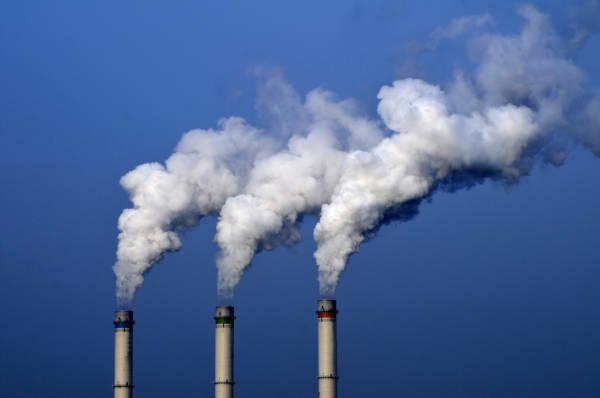carbon credits or Certified Emission Reduction (CER) corresponds to a unit issued by the modality that provides for the reduction of greenhouse gases (GHG), called the Clean Development Mechanism (CDM) resulting from the Kyoto Protocol. These carbon credits can be traded between developed countries that have the obligation to reduce your greenhouse gas emissions and developing countries that do not have this obligation.
Know more: What is the Paris Agreement?
How are carbon credits traded?
Carbon credit as greenhouse gas reduction unit equivalent to a ton of carbon dioxide, one of the main GHGs. Therefore, every ton of CO2 not emitted to the atmosphere or reduced generates a carbon credit. This credit is marketable on the market.
Many developed countries that fail to achieve their reduction targets established by the Kyoto Protocol, choose to buy Thosecredits, what became known as the “carbon market”. According to the pointCarbon, responsible for analyzing and disclosing information about the carbon market, he indicated that in 2007 this market reached the mark of 40 billion euros. |1|
Carbon credits are traded according to the modality referring to the Clean Development Mechanism (CDM), that is, if the commercialization is unilateral, the host country is the one who sets values; if bilateral, the developed country that implements the project in a developing country establishes values and rules in regarding the trading of carbon credits and finally, if it is multilateral, the values are established by the funds themselves. investments.|2|
At the Brazil, carbon credit trading is carried out by Commodities & Futures Exchange through auctions. The main carbon credit exchanges in the world are: European Union Emissions Trading Scheme (Europe); New South Wales (Oceania); Chicago Climate Exchange (North America) and Keidanren Voluntary Action Plan (Asia)|3|.
readalso:What are environmental conferences?
Advantages and disadvantages
Benefits |
Disadvantages |
Developed countries that do not meet their greenhouse gas reduction targets can, through the purchase of carbon credits, reduce their debt. |
Some scholars believe that carbon credits give developed countries the right to pollute, so they will not achieve the desired climate benefits. |
Developing countries will have, in their territories, projects aimed at sustainable development, as well as boosting their economies through the trading of carbon credits. |
Possible increase in the emission levels of polluting gases by countries that buy carbon credits. |
Reduction of greenhouse gas emissions, reducing the global warming and stabilizing the greenhouse effect. |
Possible overvaluation of carbon credits as this market develops, which could then harm developing countries' economies. |
Kyoto Protocol - origin of carbon credits
Throughout the evolution of society, manytransformations were suffered. Large and significant changes in the social and economic scenario were experienced from the Industrial Revolution. The increase in productive capacity through the increase in the number of factories and the technological development acquired in this period have completely changed the relationship between society and the environment.
The interferences made by man in the environment to make production viable through the exploitation of natural resources, have become a matter of concern around the world. THE growingindustrialization brought with you severalproblemsenvironmental, such as deforestation, air pollution and climate change.
It was then that the governments of several countries together with the scientific community and environmental organizations started to have agenda of several discussions on the issue of human interference in the environment and thus prepare laws, projects and agreements to promote environmental preservation.

Reducing greenhouse gas emissions is the main objective of the Kyoto Protocol.
O Kyoto Protocol is one of those agreements established between countries whose objective is stabilize greenhouse gas emissions to the atmosphere. Created in 1997, ratified in 1999 and in force since 2005, the Kyoto Protocol outlined goals that aim to reduce the emission of gases that aggravate the greenhouse effect, establishing the quantity and deadline for each country.
However, it is worth noting that not all countries are required to reduce their emissions. You countriesdeveloped, mentioned in Annex I of the Protocol, have goalsspecific based on their greenhouse gas emission levels. Already developing countries did not receive targets and obligations as for the reduction of emissions, therefore, the collaboration of these nations is voluntary.
One of the peculiarities of this agreement was the time it took to enter into force, as many countries refused to ratify it for economic reasons. Many nations, like the StatesUnited (biggest pollutant in the world), which by the way did not sign the Protocol, pointed out that the established goals would drastically impact their economy. already the countries that signed, signed the appointment to cooperate with each other to reduce emissions and also to promote a sustainable development.
The Kyoto Protocol, in addition to setting goals, also brings some mechanisms that help countries achieve them, known as flexibilization mechanisms. Are they:
joint implementation
emissions trading
Clean Development Mechanism
Among these mechanisms, only the Clean Development Mechanism allows cooperationin betweencountries that have no obligation to reduce greenhouse gas emissions. Therefore, it represents the “partnership” between developed and developing countries.
Grades
|1| |2| |3| |4| Carbon credits. To learn more, click here: Carbon Credits
by Rafaela Sousa
Graduated in Geography
Source: Brazil School - https://brasilescola.uol.com.br/geografia/creditos-carbono.htm
